I’ll never forget the day I walked into my grandmother’s house after she passed and saw her 1960s living room with fresh eyes. What I’d dismissed as “old-fashioned” suddenly looked incredibly chic – the rich walnut credenza, those gorgeous brass accents, the way everything felt so intentional and well-made. That’s when I got completely hooked on vintage design.
Over the past decade, I’ve transformed three living rooms using vintage pieces, and let me tell you – it’s been a journey of amazing finds, epic fails, and some seriously gorgeous results. Here’s what I’ve learned works (and what definitely doesn’t).
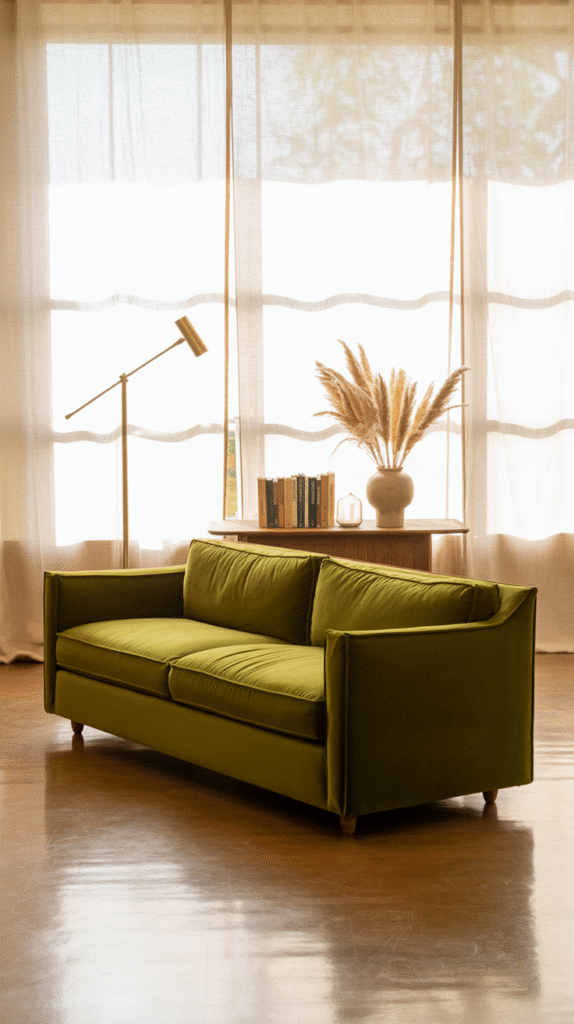
Start with One Statement Vintage Piece (Not a Whole Room Makeover)
My biggest mistake early on? Trying to vintage-fy everything at once. I looked like I was playing dress-up in someone else’s house.
Instead, pick one killer piece as your anchor. For my current living room, it’s a 1970s olive green velvet sofa I snagged for $200 on Facebook Marketplace (after reupholstering – more on that later). Everything else builds around it.
Pro tip: Mid-century credenzas and vintage coffee tables are your best starting points. They’re functional, usually reasonably priced, and instantly set the mood without overwhelming the space.
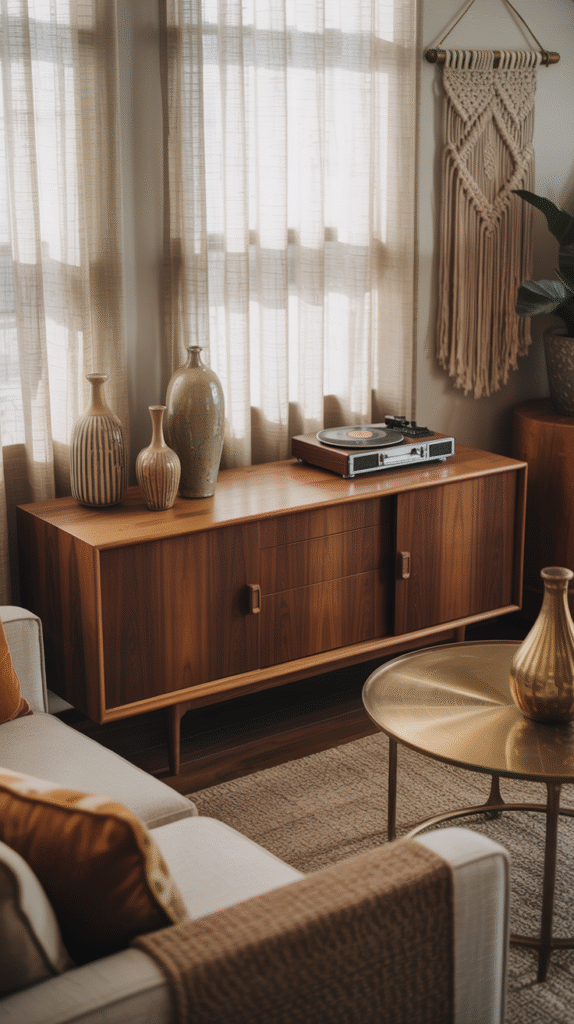
Mix Your Decades (But Keep It to Three Max)
I used to think “vintage” meant picking one era and sticking to it religiously. Wrong! My most successful room combines 1960s walnut furniture, 1970s textiles, and 1980s brass accents. The key is finding a common thread – in my case, it’s warm wood tones and earthy colors.
The 70s macrame wall hanging next to my 60s teak bookshelf? Chef’s kiss. But when I tried adding some 1950s atomic-print curtains, it looked like a vintage store exploded. Three decades, max.
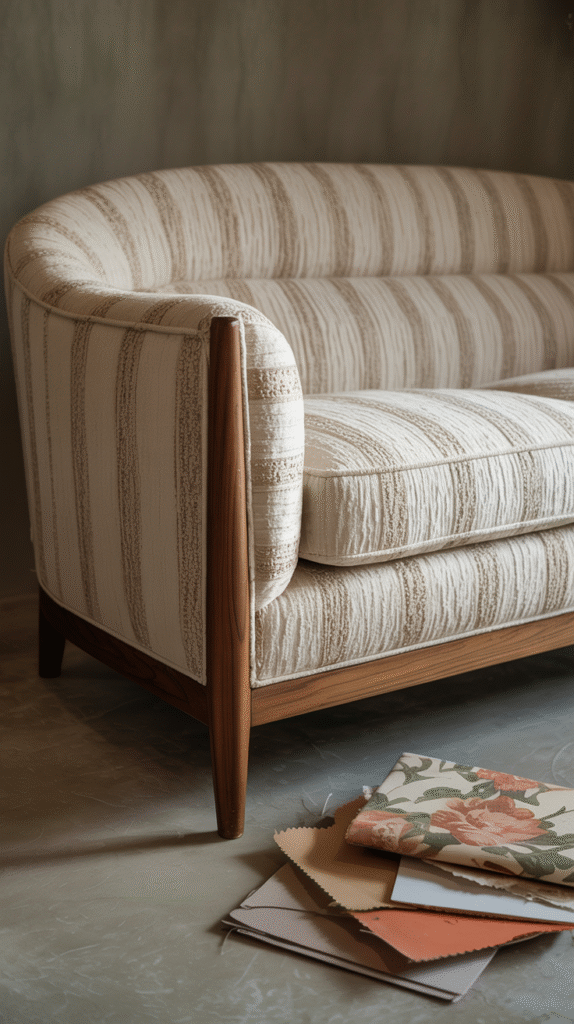
Invest in Reupholstering (Your Back Will Thank You)
That gorgeous $200 sofa I mentioned? It looked amazing but felt like sitting on a pile of rocks. I spent another $800 having it professionally reupholstered with new foam and springs. Best money I ever spent.
Here’s what I learned about vintage upholstery:
- Always check the frame construction first – solid wood good, particle board bad
- Factor reupholstering costs into your budget from day one
- Save original fabric swatches for reference (I keep mine in a little envelope)
- Spring for the good foam – your guests will actually want to sit down
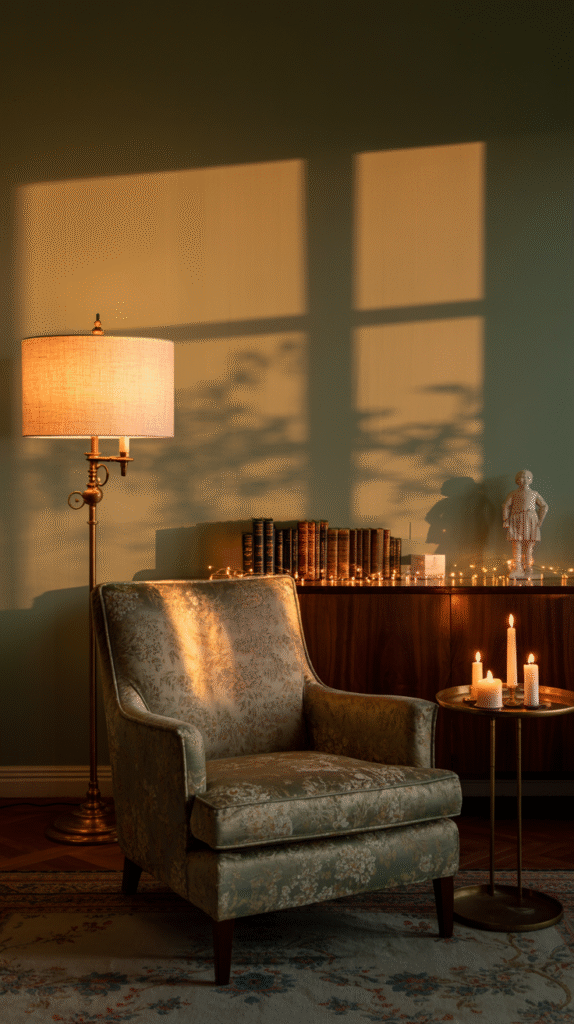
Layer Your Lighting Like You’re Setting a Mood
Overhead lighting is vintage design’s worst enemy. I learned this the hard way when my beautiful space looked like a doctor’s office under those harsh ceiling fixtures.
Now I use at least four different light sources:
- A vintage brass floor lamp with a warm bulb (found at an estate sale for $45)
- Table lamps with fabric shades on side tables
- String lights behind my credenza for ambient glow
- Candles for evening (because vintage rooms were made for candlelight)
The magic happens at dusk when you can layer all these sources. It’s like Instagram filter for your entire room.
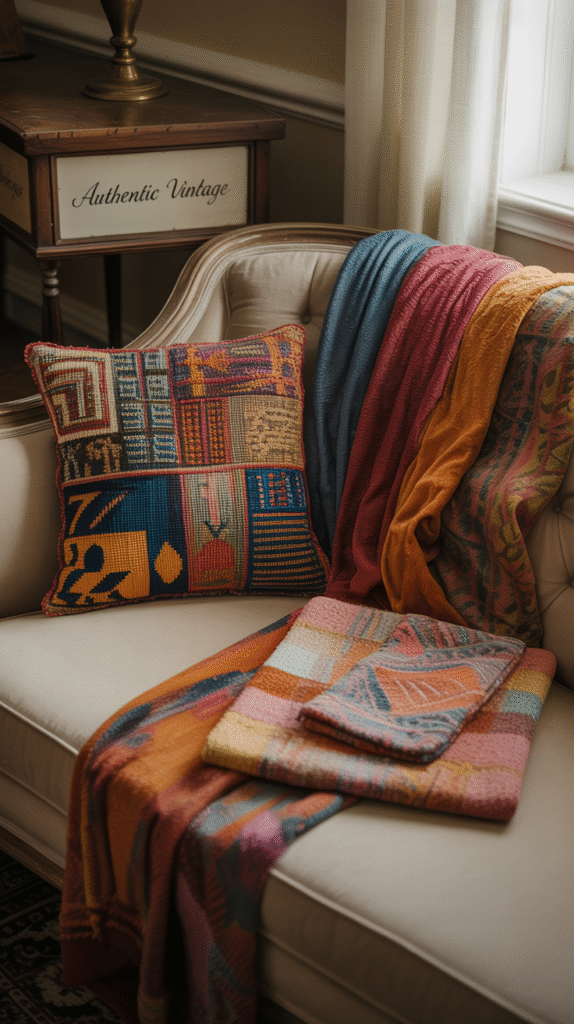
Hunt for Vintage Textiles (But Wash Everything Twice)
Nothing says vintage like the right fabrics, but oh my goodness, the smells some of these pieces carry. I once brought home a beautiful 1970s afghan that made my entire car smell like mothballs and cigarettes.
My textile hunting tips:
- Check for moth holes in wool items (learned this one the expensive way)
- Always smell before you buy – some odors never come out
- Velvet from the 70s photographs beautifully but shows every cat hair
- Vintage pillows are usually a better investment than full curtain sets
I’ve found my best pieces at estate sales on the last day when everything’s 50% off. That’s where I scored four gorgeous needlepoint pillows for $12 total.
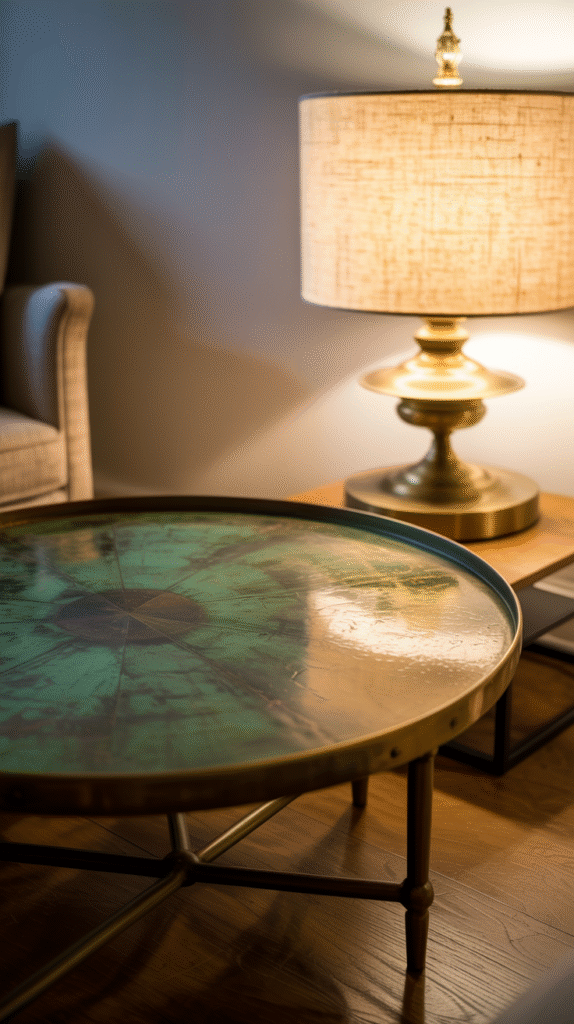
Embrace the Patina (But Know When to Restore)
There’s a fine line between “beautifully aged” and “actually falling apart.” I’ve crossed that line more times than I care to admit.
My brass coffee table had this gorgeous green patina that I almost polished away – thank goodness my neighbor stopped me. But the vintage lamp with the frayed electrical cord? That needed professional attention immediately.
Safety first rule: Always have vintage electrical items checked by a professional. I learned this after a vintage table lamp started sparking during a dinner party. Not the ambiance I was going for.
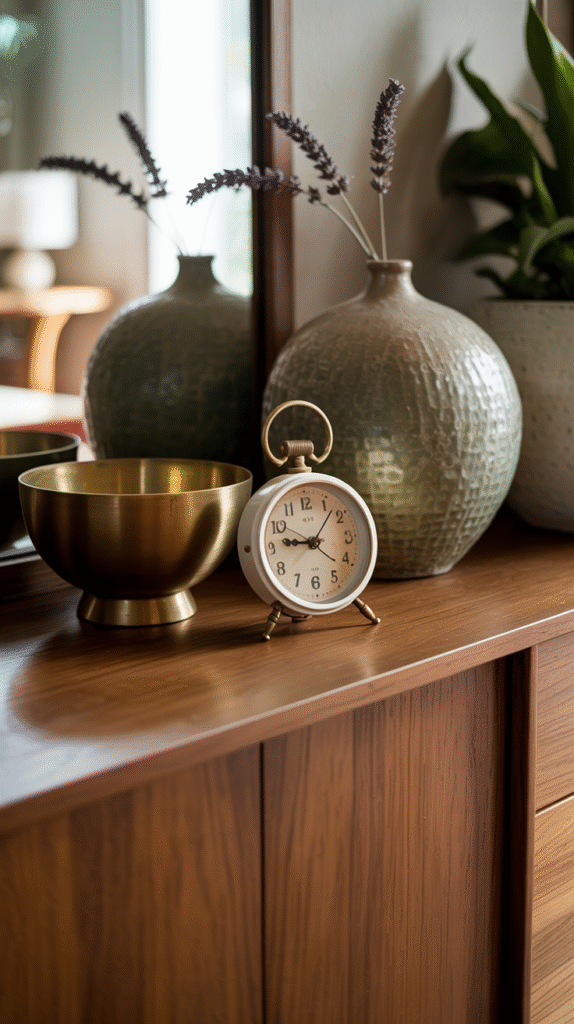
Create Vintage Vignettes (Think Museum Display)
One trick I picked up from a vintage shop owner: group your pieces like mini museum displays. On my credenza, I have a brass bowl, a ceramic vase, and a small vintage clock arranged in a triangle. It looks intentional, not cluttered.
The rule of three works magic here. Odd numbers just look more natural to the eye, and vintage pieces have such great shapes and textures that they deserve to be showcased properly.
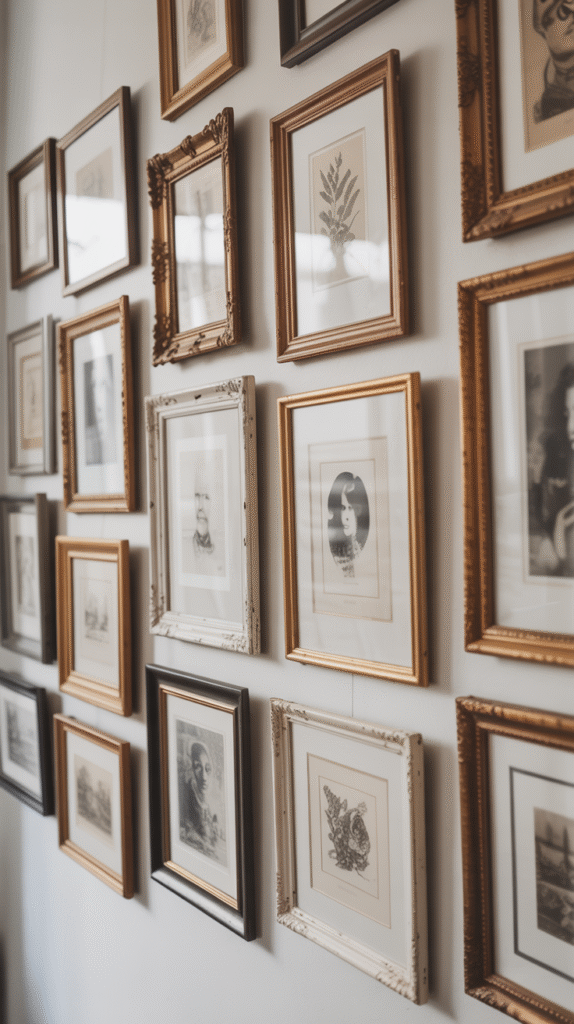
Don’t Forget the Walls (Gallery Walls Are Your Friend)
My walls looked so bare after I’d focused all my energy on furniture. Vintage gallery walls saved the day, but they’re trickier than they look.
I spent an entire weekend arranging and rearranging frames on my living room floor before hanging anything. The secret? Mix frame sizes and colors, but keep a consistent mat color (I use cream for everything).
Money-saving tip: Thrift stores usually have tons of vintage frames. I buy them for the frames and donate the artwork back if it’s not my style.
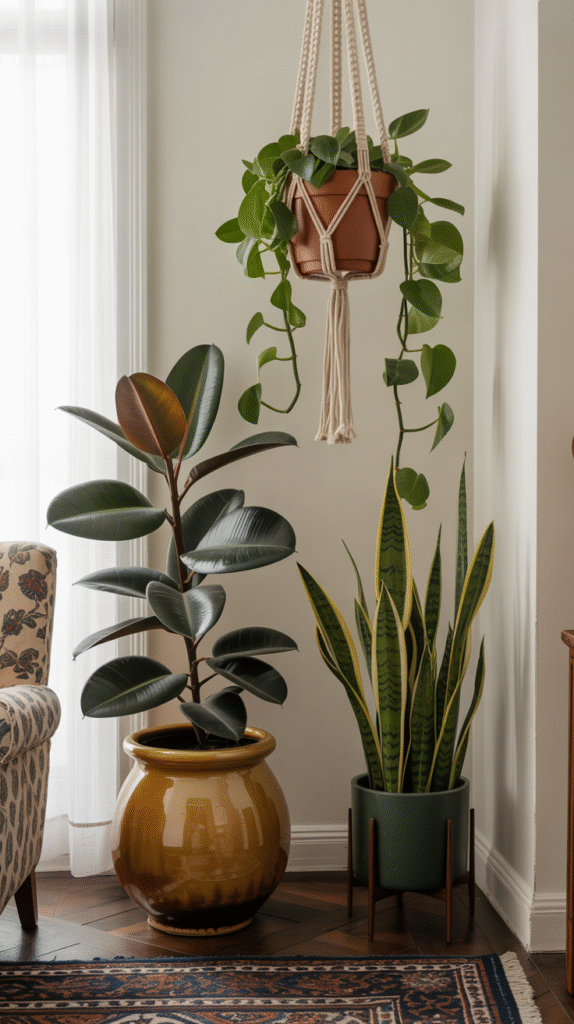
Add Plants (But Choose Vintage-Appropriate Varieties)
Modern succulents look weird in vintage spaces – I tried it. Instead, go for plants that would’ve been popular in your chosen era. For my 60s-70s vibe, I use:
- Rubber trees in ceramic planters
- Hanging pothos in macrame holders
- Snake plants in tall floor planters
The key is finding period-appropriate planters. I have a collection of ceramic planters from the 70s that cost me about $5-15 each at garage sales. They make even basic plants look intentionally vintage.
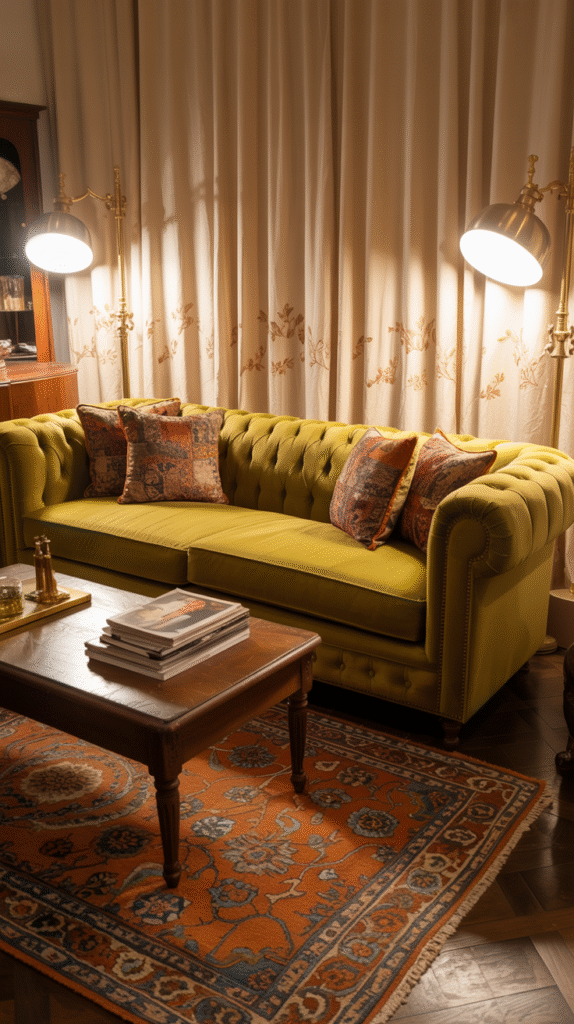
Know When to Fake It (Some Things Are Better New)
Not everything needs to be authentically vintage. Some things work better when they just look vintage but function like modern pieces.
Items I buy new but vintage-styled:
- Area rugs (vintage ones are often too fragile or expensive)
- Curtains (vintage fabric fades unevenly, and custom sizes are impossible to find)
- Some lighting (LED bulbs in vintage-style fixtures give you the look without the fire hazard)
I found an amazing Persian-style rug that looks perfectly 1970s but was made last year. It cost $300 instead of $3000, and I don’t panic when someone spills wine on it.
The Real Talk About Vintage Living
Living with vintage pieces isn’t always Instagram-perfect. My vintage coffee table has water rings despite coasters everywhere. The velvet sofa attracts pet hair like a magnet. Sometimes I miss the convenience of buying a complete room set from one store.
But there’s something so satisfying about a room filled with pieces that have stories, that were crafted when quality mattered more than quantity. Every time I sink into that reupholstered sofa with a cup of coffee, surrounded by my carefully curated vintage finds, I remember why I fell in love with this style in the first place.
Start small, be patient with the hunt, and don’t be afraid to make mistakes. Some of my best finds came from taking chances on pieces that didn’t quite fit my original vision. Your vintage living room should feel like you, just with really good taste and a few decades of style wisdom behind it.
Trust me, once you start seeing the potential in “old” furniture, you’ll never look at a big box store the same way again.
